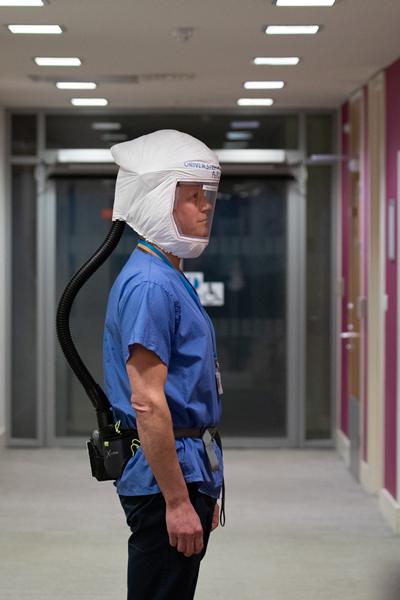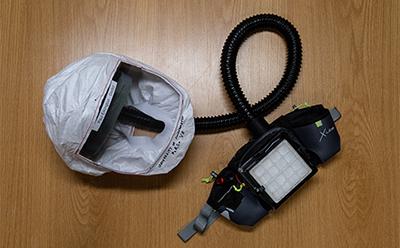
Developed from scratch in just one week the co-called ‘PeRSo’ system uses a fan to draw air through a High Efficiency Particulate Air (HEPA) filter that is delivered to the wearer via an enclosed hood or face mask.
The device, which is currently at the prototype stage, is designed to be lightweight and quiet and where possible has been made using off-the shelf-components and readily available materials and manufacturing methods such as laser cutting, 3D printing and a lightweight sewing machine.
MORE COVID-19 TECHNOLOGY & ENGINEERING NEWS HERE
Developed in collaboration with engineers from the National Oceanography Centre, McLaren, Kemp Sails, and Southampton manufacturing firm Baynhams, the system as already passed first-stage ‘sniff’ tests where a strong-tasting vapour is sprayed around the air inlet to see whether the user can detect it, and no penetration occurred.
Hywel Morgan, Professor of Bioelectronics at the University of Southampton said: “This is an excellent example of industry, universities and hospitals combining their expertise and answering the call to develop solutions needed to save lives in the current crisis".
The next steps are tests with doctors and nurses on wards, to obtain feedback on comfort, usability and efficiency. If the tests are successful, the design will also be published open-specification so it would be available to other manufacturers and people in need around the world.

The group's immediate aim is to develop and scale up production and make the product available to as many healthcare professionals as possible.
The group said that is also exploring the development of a prototype respirator for the developing world that could be made from components available to low-resource countries.
Paul Elkington, Professor of Respiratory Medicine at the University of Southampton and Honorary Consultant at UHS, said: "We must minimise the risk of infection for medical staff and stop them getting sick at the peak of the pandemic, so that they can care for others. The engineering team have rapidly developed something simple yet effective. The HEPA filtered air removes 99.95 per cent of particulate matter and the face mask protects from splashes, and so we think this will reduce the risk of infection."




Project to investigate hybrid approach to titanium manufacturing
What is this a hybrid of? Superplastic forming tends to be performed slowly as otherwise the behaviour is the hot creep that typifies hot...